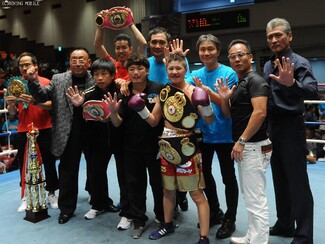 Last week we looked at some little known facts of Japanese boxing, and today we're going to follow that up with a similar article, this time focusing on the often overlooked women of Japanese boxing, who also have some interesting records of their own! 1-Momo Koseki holds the Japanese record for most world title defenses, with 17. That's not just a female record but a Japanese record, with Koseki defending the WBC Atomweight title 17 times from August 2008, when she won the belt, to her final defense in November 2016. During her reign she also won the WBA Atomweight title beating Ayaka Miyao. The run included 1 wins and a draw and included victories over almost every notable Atomweight of the time, including Nao Ikeyama, Saemi Hanagata and Miyao. She eventually gave up the belt and in 2017, in what was her final bout, she became a 2-weight champion. 2-The oldest Japanese world champion was Nao Ikeyama, who lost the WBO Atomweight title on July 29th 2018, 48 years, 10 months and 9 days. She not only holds the record for the oldest Japanese world champion when she lost the title, but also when she won it, winning the belt at 44 years 7 months and 29 days, and she has the trifecta as she also holds the record for being the oldest for a successful world title defense, coming when she was 47 years, 9 months and 23 days. 3-The Japanese record for the fewest fights to a female world title is a disputed record with 3 different claimants depending on definition. The fewest fights, as recognised by the JBC, sees Momo Koseki holding the record with 3 sanctioned bouts, however she had fought several times in Thailand prior to that in bouts not recognised by the JBC. Similarly Naomi Togashi the "interim" WBC female Light Flyweight title in her third bout recognised by the JBC, though of course that's an interim title. Togashi would however receive the full version of the title before her 6th professional bout. The record, as seen on boxrec, is actually held by Kasumi Saeki, who won the WBO female Minimumweight title in her 4th professional bout earlier this year. All of her bouts came after the JBC officially recognised female boxing and there is no confusion over the legitimacy of her bouts or title win. 4-The shortest recorded height of a Japanese female fighter is Yuri Kobayashi, who was 4′ 10½″, or 149cm. She fought from 2006 to 2017 and racked up a 4-4-4 record. Interestingly she is taller than Kazunori Tenryu, who was the shortest Japanese male to fight in a professional bout. 5-The Japanese fighter to win world titles in the most divisions is Naoko Fujioka, who is Japan's only 5 weight world champion. The talented Fujioka began her career at Minimumweight, winning the WBC female Minimumweight title in 2011, when she stopped Anabel Ortiz. She would skip all the way up to Super Flyweight for her second title, dethroning Naoko Yamaguchi in 2013 for the WBA female Super Flyweigth title. Her third title came at Bantamweight, when she captured the WBO female Bantamweight title. Her 5th title saw her dropping to Flyweight, to claim the WBA title in 2017 against Isabel Milan, before dropping down to Light Flyweight for the WBO towards the end of 2017. Interestingly Fujioka didn't take a Flyweight title until her third shot, losing to both Susi Kentikian and Jessica Chavez in bouts for titles at 112lbs.
0 Comments
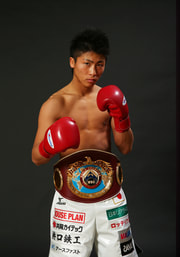 Over the last few years we've seen a growing number of fighters being put on the fast track to the top, and they've genuinely come from across the globe. We've had Japanese fighters like Naoya Inoue and Kosei Tanaka, Thai's like Knockout CP Freshmart, Ukrainians like Vasyl Lomachenko and Oleksandr Usyk as well as Russian based fighter Dmitry Bivol. Whilst not all fast tracked fighters get the success they are looking for, with Lu Bin and Mark Anthony Barriga both coming up short recently, it's been an exciting period to see prospects raced to success. As well as those who have had chances straight away we've also seen a number of fighters having to wait, though looking like they could be hot shotted straight into the title picture, the likes of Israil Madrimov seemed like they could compete best in the world straight away. Win or lose it's hard to imagine someone like Madrimov wouldn't at least be competitive with someone like Tony Harrison, and that's not us trying to be disrespectful to "Super Bad". It got us thinking, who has fought for a world title on debut? And how have they done? And if we're being honest our research showed more fighters than expected had actually gotten a shot, with one notable success having done better than just fight for a title but also win it! Surprisingly from 8 examples we found 5 were from Asia, with the other 3 coming from across America. The First The most notable example, and the first we found, was US Heavyweight Pete Radamacher, who made his professional debut in 1957. The then 28 year old Rademacher had won an Olympic gold medal in 1956 and had amassed a reported amateur record of 72-7. His route to an Olympic gold medal had seen him stop all 3 of his opponents, and do so in a combined 6 rounds before he headed to the professional ranks. On debut, on August 22nd 1957, he faced off with the then 32-1 Floyd Patterson, the Heavyweight champion of the world! The bout was widely seen as a mismatch, though Rademacher did have success and dropped Patterson in the second round. Sadly however Rademacher was unable to build on that and Patterson roared back, dropping the challenger a total of 7 times before scoring a KO towards the end of round 6. Despite losing on debut Rademacher would go on to have a pretty good career, going 15-7-1 (8). Those numbers however don't do credit to what he did, with wins over LaMar Clark, a real fraud, George Chuvalo and Bobo Olson, whilst being matched insanely tough through his career. His losses came not only to Patterson but also Zora Folley, Brian London, Doug Jones, Archie Moore and Karl Mildenberger. The Controversial Lovera It would be 18 years until we had another debutant challenger, with Paraguayan Rafael Lovera fighting for the WBC Light Flyweight title against Luis Estaba on September 13 1975. The title had been stripped from Italian Franco Udella, who refused to fight Lovera. Udella had become the inaugural champion in April 1975, beating Valentin Martinez for the title. For some reason the WBC allowed Lovera to fight for the belt, though he was stopped in 4 rounds by Estaba. Estaba himself would go on to hold the belt until 1978, when he was stopped by Freddy Castillo, having had 11 defenses of the belt. Lovera would never return to the ring, retiring 0-1. 1984 see the IBF do a double Interestingly 1984 saw two different debutant challengers, at least we think so. We say that because the first of those was Indonesian fighter Joko Arter, and it's impossible to be 100% about Indonesian records. What is known is that Arter was the second Indonesian to fight for a world title, following Thomas Americo, and didn't fair very well in what is thought to be his only professional bout. The debuting Arter took on Korean fighter Min Keun Oh on March 4th 1984 in a bout for the newly created IBF Featherweight title, and he was stopped in 2 rounds by the Korean. We've not been able to find any other bouts featuring Arter afterwards, though we do know that Keun's reign was regarded as a very disappointing one, and he lost in his third defense. Interestingly Joko's brother, Dobrak Arter, would go on to have significantly longer career, though his record, like that of Joko is pretty unclear, with reports being that he fought over 80 times, whilst Boxrec have only 23 of his bouts in their database. Exactly 5 months after Arter lost we have the year's other debutant challenger, Filipino Joves De La Puz. The Filipino took on Japan's influential Satoshi Shingaki in a bout for the IBF Bantamweight title, in what was Shingaki's first defense, and came close to shocking the boxing world, losing a narrow split decision to Shingaki over 15 rounds. The bout, which was held in Japan, really is an oddity in lots of ways, not just the debut challenge but it was also the first time a Japanese fighter had defended an IBF title on Japanese soil, under the auspices of the renegade IBF Japan outfit. Sadly it appears Puz, like many others on this list, never actually returned to the ring, and he needs to go down as a real "what could have been?" given that a close loss to Shingaki, over 15 rounds, shows there was something about him. More IBF mess, this time Minimumweight We stay with the IBF and the IBF Japan for the next debutant title challenger, Masaharu Kawakami. On June 14th 1987 Kawakami fought Kyung Yung Lee in the inaugural IBF Miniumweight title bout, losing in 2 rounds to Lee. Unlike a number of fighters on this list Kawakami would actually go on to fight further bouts, losing by stoppage 6 months later to Romero Opriasa and then in 1990 to Joe Constantino. However their is a huge asterix to his name when it comes to this, for several reasons. Firstly the graphic on the screen for the bout suggests Kawakami has an 88% stoppage rate and secondly Kawakami had been scheduled to fight in a professional bout prior to face Lee, though that bout was turned into to an exhibition with details regarding the bout being very sketchy. Sadly we've not been able to find in depth details on that contest, but it certainly appears there was something very odd about Kawakami's entire career. We stick with the IBF for the next debutant challenger, Domingus Siwalette, who fought for the IBF Minimumweight title against Ratanapol Sor Vorapin on September 26th 1993. Siwalette, like Joko Arter, was an Indonesian fighter so we're not totally sure on his professional record, though the suggestion is that this was his professional debut, with their being a struggle for qualified fighters at the weight at the time. Siwalette was stopped in the 4th round by the Thai world champion and began what was a disappointing career. Like Kawakami he did continue to fighter after his loss, and like Kawakami there is no record, at the time of writing, of him ever scoring a win. Instead Siwalette went 0-10 in his career, losing 3 of his 10 bouts by stoppage. That sounds amazingly bad, though his competition is actually pretty scary. Not only was he beat by Ratanapol, but also Fahlan Sakkreerin Jr, Pichitnoi Sithbanprachan and Muhammad Rachman. In just 10 recorded bouts he fought 4 fighters who would hold world titles! The last man Only a few months after Siwalette's shot we saw the most recent male debutant world title challenger, Arturo Mayan. Mayan, a Mexican fighter, would get his world title shot on January 7th 1994, when he challenged Puerto Rican Alex Sanchez, and was stopped in 90 seconds in Spain. Sanchez, the then WBO Minimumweight champion was making his first defense, just weeks after winning the title, and would actually go on to make quite a few defenses before coming undone in 5 rounds against the legendary Ricardo Lopez. Mayan's 90 second loss to Sanchez was the Mexican's only bout, and in fact his career is the shortest of any world title challenger, by quite some margin in fact. The Solitary Success Story The most recent world title debutant, that we could find, came in 2008 and was actually female fighter Hyun Mi Choi, a North Korean refugee who is now based in South Korea. Choi did what none of the men could, and ended actually winning the WBA female Featherweight title on her debut, as she defeated Chunyan Xu by unanimous decision on October 11th 2008. Impressively she did this at the age of 17! Choi no only won her world title debut but then went on to defend it. In fact she made 7 defenses before moving up to to become a 2-weight world champion, adding the WBA female Super Featherweight title to her collection. Notably Choi has run up wins over a number of good fighters, including Claudia Andrea Lopez, Sandy Tsagouris, Fujin Raika, Diana Ayala and Mayra Alejandra Gomez. At the moment her record stands at 16-0-1 (4), and is set to make her next defense on June 29th, against Japanese challenger Wakako Fujiwara. Given we are more than 20 years removed from the last male debutant world title challenger it's unlikely we're set to see another any time soon, if ever, though with the rise in female boxing we really wonder if we will, some day soon, see someone match Choi's incredible debut achievement. (Image courtesy of Ohashi Gym, boxrec and the KBA) 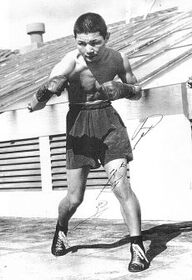 One thing we've discovered from our time on the internet is that everyone likes a good list, so here's one looking at some unique and interesting facts from Japanese boxing. For this list we've tried to stay away from the ultra-obvious for the most part. So with that said, hopefully something on this list will be something you've not heard or read before! 1- Tsuneo "Piston" Horiguchi has the record for the most fights and most wins in Japanese boxing history. His career, which began in 1933 and ended in 1950, just 6 months before his death, saw him rack up an incredible 142 wins from 183 fights! To put his activity into some perspective, it would have be almost 11 fights a year had those years been normal years. Of course, they weren't normal years, with World War 2 coming right in middle of his career, leading to him fight just twice in 1944 and not at all in 1945. Meaning on average, he fought way more than 11 times a year, with his busiest year being 1946, where he fought 20 times...with the first of those fights coming on May 1st of that year!* If you're interested in learning more about Horiguchi we did actually stumble on a documentary on him, in Japanese, which can be seen here The story of Piston Horiguchi 2-Jiro Sawada is thought to be the youngest Japanese fighter to score a professional victory, in Japan. The youngster was assumed to be 15 years, 10 months and 5 days old when he beat Jiro Kumagai in May 1954. There is some dispute over this, due to his birth records being lost in the war, though his reported date of birth is July 23rd 1938. Although this record appears to stand for Japanese fighters on Japanese soil, it's actually been broken by fighters fighting outside of Japan. For example, Ryuto Maekawa was 15 years, 3 months and 19 days old when he won his debut in Thailand in 2011. Given how many fighters fight outside of Japan it's hard to really be sure of the youngest age for those who score a win away from home, though it's hard to believe many have done so younger than Maekawa. If Sawada's birth date is right, he is also the youngest Japanese fighter to win an OPBF title, winning the Lightweight title before his 18th birthday. 3-The shortest recorded bout in Japanese boxing history was an all debutant affair that saw Daiki Saito take out Yasuyuki Hoshino in just 8 seconds back in 2005. This goes down as one of the shortest ever fights in boxing history, never mind Japanese boxing history, and can be seen in full underneath this article. Bizarrely Saito would fight just once more, 4 months later when he fought to a draw, whilst Yoshino would compile a 5-5-1 (4) record, before ending his career in 2013. 4-Kazunori Tenryu, also known as Kazunori Denju, is reported to be the shortest Japanese male boxer, standing at 4'9", or just 145cm. He is a man of a few interesting historical footnotes, including being the first ever Japanese Light Flyweight champion, winning the belt in 1975 and essentially monopolising the title from 1975 to 1980, before losing to future world champion Tadashi Tomori. Whilst Tenryu would dominate the domestic scene he sadly came up short in world and OPBF title fights, and would really only leave a mark on the Japanese scene during an 8 year career that saw him run up a 29-7-3 record. That doesn't look great though his losses were mostly to world class fighters, including Tomori, Shigeo Nakajima, Jaime Rios, and Sung Jun Kim. 5-Eijiro Kuruma really loved the Japanese Featherweight title! We often seen fighters jumping through the weight classes to claim a second or third title, for Eijiro Kuruma however there was seemingly only one title he ever wanted. The Japanese Featherweight title. He is the only man in Japanese boxing history to win the same national title 4 times. Yes he is a 4-time National Featherweight champion! Kuruma would win the belt for the first time in January 1983, would start his second reign in March 1984, his third reign in August 1985 and his final reign in August 1986. His only bout for any other title came in a loss to OPBF Featherweight champion Sung Yun Kim in November 1986, in what was Kuruma's final bout. Please let us know if these types of articles are something you're interested in as we're happy to provide more of this time of thing in the future and shine a little light on more small fact of boxing history! *There is some dispute about Horiguchi's record, and the official Japanese records suggest that the most fights in a year record is held by Iwao Hakamada at 19. Hakamada's record should be noted as the JBC record though, with Horiguchi's record pre-dating the JBC which was created in 1952. 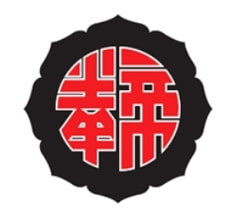 Over the last few years Teiken's dominance of the Japanese scene has really under threat and as we right this they currently have no world champions at the gym and only a pair of domestic champions. It wasn't that long ago that fighters like Shinsuke Yamanaka, Roman Gonzalez, Jorge Linares, Takashi Miura, and Carlos Cuadras all holding, or in the mix for, world titles. Now their hopes at the top level essentially lie with Ryota Murata, who will know a loss in July ends his career, the beyond their best trio of Gonzalez, Linares and Cuadras, who are all still in the mix, but not the fighters they once were, and Kenichi Ogawa. Worryingly all of the names so far mentioned are 30 or above, and most of them are seen as being on the slide. It would be easy to suggest the Teiken gym is now longer a leading gym in Japan. The likes of the Watanabe Gym and the Ohashi Gym seem to have over-taken it in recent years, and the gym hasn't replaced their faded stars. That however would be partially wrong. The gym isn't done as a top gym, what has happened however is that their transitional stage to the next generation of top fighters, has been delayed some what. What we mean by that is that instead of having ready made replacements for their faded stars the gym really missed out on a generation of talent. They failed to secure the youngsters who were part of the current generation of stars. The likes of Naoya Inoue and Kenshiro and Hiroto Kyoguchi and Kosei Tanaka took other options, and didn't ink deals with the Teiken gym. Sometimes the reason was obvious, such as location or gym owner, and other times it wasn't, but what is clear is that the top Japanese fighters of today saw other avenues, and went their own way. 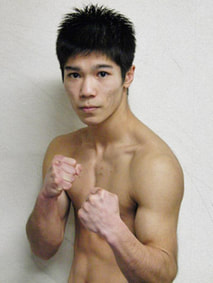 That left Teiken needing to chase the next wave of fighters, and that's exactly what they've done, signing 3 top Japanese amateurs in the last 18 or so months, and developing some lesser talents as well. They have essentially had to play catch up with the rival gyms since Yamanaka retired, and they have done so in a manner that could end up having them back on top of the Japanese scene in the coming years. Before we look at their top prospects it's worth looking at both of their current national champions. They are Super Featherweight Masaru Sueyoshi (19-1-1, 11) and Welterweight Yuki Nagano (16-2, 12). Interestingly neither of these were amateur standouts, Sueyoshi managed to go 21-8 in the amateurs before competing in the 2012 Rookie of the Year, losing to Masayuki Ito. Nagano on the other hand won the 2015 Rookie of the Year. Both have developed from Rookies to national champions, and that leads us to one of the top Teiken prospects, one who doesn't have a strong amateur backing but has excited fans. Super Flyweight hopeful Hayate Kaji (12-0, 9), like Sueyoshi and Nagano, came through the Rookie of the Year. In fact Kaji won the Super Flyweight competition on the same day that Nagano won the Welterweight competition, in 2015, winning the final in just his 4th professional bout. Sadly since that Rookie triumph Kaji hasn't shone like many suspected, and despite maintaining his unbeaten record the 21 year old has shown signs of ill discipline, and disappointing performances, especially his 2017 clash with Jun Blazo. Those poor performances, added to blow outs against some horribly over-matched competition, has seen Kaji essentially put on the back burner, with his team clearly focused on getting him experience before getting him a title fight. That's a risky approach for the youngster, who needs to be tested, but he is a big hope for the gym, with an exciting style and vicious power, and time well and truly on his side. Whilst Kaji is clearly a prospect to keep an eye on the more interesting thing about the Teiken gym is a trio of former amateur standouts, who are just beginning their professional careers but all 3 are marked, already, for something huge. 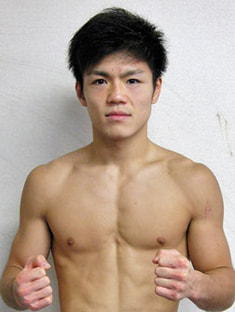 They are Mikito Nakano (2-0, 2), Kuntae Lee (1-0, 1) and Shokichi Iwata (2-0, 1) who only 5 pro fights between but can already be regarded as 3 of the brightest hopes in Japanese boxing, and at the time of writing all 3 are 23 years old. The oldest of the 3, by a few months, is Nakano a southpaw competing in the Featherweight division. He ran up a tremendous 68-9 (48) record in the amateur ranks before turning professional last year and debuting in October. Despite being a fantastic talent his first two bouts were little more than show cases against Thai novices however we now know that his third bout, scheduled for July 6th, will come against Filipino Arvin Yurong (12-2, 3). Yurong is a really test for Nakano, and he showed a lot of desire and hunger in his January loss to Xiang Li. If Yurong can show that same hunger here he could give Nakano real issues and ask very serious questions of the Teiken man. If Nakano slices through him we can already mark Nakano as someone who should be mixing for titles by the end of 2020. On the same card as Nakano's bout with Yurong we'll see Lee have his second bout. Like Nakano Lee is a southpaw, and had a stellar amateur career, running up a reported 102-10 amateur record. He fights at 140lbs, a division which Japan hasn't had much international success at in recent years, and looks like a real natural. On his debut he hardly broke sweat, beating a Thai novice inside a round, but looked like every punch he threw was crisp, natural and sharp. He's someone with a lot of potential, strong amateur background, and a rather rare backstory, with North Korean blood in his veins. As an amateur he competed for North Korea in international competitions and clear has the ability to make a mark well above domestic level. At the moment Lee's opponent for his July 6th bout hasn't been announced, though the bout will be scheduled for 6 rounds and we'd expected a limited opponent, before a stiffer test at the end of the year. Nakano and Lee are both fighting on the same card leaving Iwata as the odd one out, however he will actually be in the ring on July 12th, as part of the under-card for Ryota Murata rematch with Rob Brant. Iwata made his professional debut in the US last year, after running up a 59-12 (16) amateur record, and then made his Japanese debut earlier this year against Rookie of the Year winner Daiki Kameyama. Unlike the other two he does spend plenty of time in the west and clearly is happy to fight on international soil early in his career, despite the fact he's a Light Flyweight and the best competition there is in Asia right now. On paper the's the least experienced in terms of amateur bouts, but his win over Kameyama is the best that the trio have and he seems the ost likley to be fast tracked. We've not yet been told who Iwata will be debuting against but we're expecting it to be an international opponent, hopefully some one who will ask Iwata something new, and allow the speedy youngster to show more of what he can do. Whilst the Teiken gym hasn't got any world champions, it appears they have 3, or 4 if we include Kaji, top prospects and the foundation is there for the next wave of Teiken success. It might be a few years away, and we may see Watanabe and Ohashi move further ahead in that time, but Teiken is not dead, it's merely transitioning to the next generation of fighters, and they are very exciting. One more thing to add is the fact Teiken will be scouting the 2020 Olympics and will be expecting to pick up several of the top prospects from those games, so the next wave of Teiken fighters won't just be Kaji, Nakano, Lee and Iwata, but also some of the fighters who may well medal at Tokyo games. The gym has the money, the connections and the know how to secure big signatures, and we're really excited to see where those Olympians end up at the end of next year, along with those top amateurs who fail to qualify for the games. They are likely to have promoters, including Teiken, trying to get their signatures, and strengthen the stables for the future. Teiken isn't dead, it's just a sleeping giant. (All Images courtesy of Teiken.com) 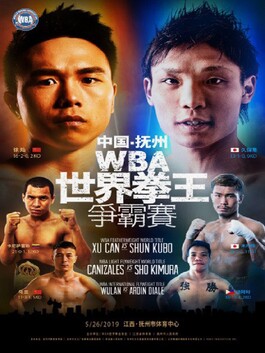 The month of May promised a lot for Japanese fighters, with a staggering 8 world title fights featuring Japanese fighters during the first month of the new Reiwa period of Japanese history. Sadly what could have been a huge month for Japanese fighters was a nightmare, with their fighters going 1-7 for the month at the top level. Whilst history was made in Europe, Japanese fighters suffered losses on Japanese, Chinese and American soil, and some defeats were horribly one sided. The first of the Japanese fighters to fall short was Ryuichi Funai (31-8, 22) who was stopped in the 7th round by Jerwin Ancajas (31-1-2, 21) on May 4th, in an IBF Super Flyweight title bout. Ancajas was a big under-dog, but his performance saw him being totally out classed, and used as a punch bag by Ancajas, who had one of his best performances. Whilst Fuani showed his toughness his lack of defense, speed and movement really cost him hard here and allowed Ancajas one of his best performances so far. Just over a week later, on May 13th, we saw Masayuki Kuroda (30-8-3, 16) put up a brave effort as he lost to Moruti Mthalane (38-2, 25), in an IBF Flyweight title bout. To credit Kuroda he was always seen as the under-dog and was really competitive in the first half, though ended the bout as the clear loser, suffering awful facial swelling in the process. Kuroda's effort deserves so many plaudits, but at the end of the day Mthalane was too good, too sharp and too skilled. The third man to lose again put up a brave effort, with Reiya Konishi (17-2, 7) coming up short in an IBF Light Flyweight title fight with Felix Alvarado (35-2, 30) on May 19th. Again the Japanese challenger put up a great effort, and was competitive at times, but was unable to match the champion overall, and was rocked hard late on as Alvarado came close to dropping the Shinsei man. All credit to Konishi for his effort, but he was clearly second best here to the excellent champion The weekend of May 25th and 26th was a nightmare for Japanese fighters, a real nightmare, with a 0-3 run over the weekend. The first of those to lose was Masayuki Ito (25-2-1, 13), who lost the WBO Super Featherweight title to Jamel Herring (20-2, 10), in what was regarded as a 50-50 bout. Herring really boxed to a fantastic gameplan to out point Ito, who failed to ever get a read on the southpaw stance of Herring. Just a day later we saw back to back losses for Shun Kubo (13-2, 9) and Sho Kimura (18-3-2, 11). Kubo put in a fan friendly performance, though was stopped by Chinese fighter Can Xu (17-2, 3) in a WBA "regular" Featherweight title fight. Kubo came to win, and gave a good account of himself, but was worn down by Xu, who made his first defense. Kimura on the other hand was lacklustre, and very disappointed in himself, as he lost to WBA "regular" Light Flyweight champion Carlos Canizales (22-0-1, 17). Kimura, who dropped down in weight, looked like he had lost 25% of his usual hunger, desire and energy and was rarely a threat to Canizales. The final set back came on May 31st when former WBO Minimumweight champion Tatsuya Fukuhara (21-7-6, 7) lost a technical decision to WBC champion Wanheng Menayothin (53-0, 18). This rematch was expected to be hotly contested, but Fukuhara was just doing enough to lose competitive rounds to Wanheng, who extended his unbeaten record. The only shining light for Japanese boxing at the world level this past month was the sensational Naoya Inoue (18-0, 16), who created history in Glasgow by stopping Emmanuel Rodriguez (19-1,12) in 2 rounds to add the IBF Bantamweight title to his WBA regular belt. This bout, on May 18th, saw a Japanese fighter win a world title bout on European soil for the first time, after 20 losses, and proved to be their only success at world level this past May. Whilst many of those who lost were clear under-dogs, such as Funai, Mthalane and Kubo, others weren't. Kimura was the betting favourite and Ito was a 50-50 shot. To see such a band month is a real worry and one that will linger in the mind of Japanese fans for the foreseeable future, as all the countries other top fighters, several of which have big fights in June and July. Whilst the month promised a lot, it was a disaster for Japanese fighters, and hopefully not a sign that the Reiwa era will be a bad one for the Land of the Rising Sun. |
Thinking Out East
With this site being pretty successful so far we've decided to open up about our own views and start what could be considered effectively an editorial style opinion column dubbed "Thinking Out East" (T.O.E). Archives
March 2024
Categories
All
|
 RSS Feed
RSS Feed
